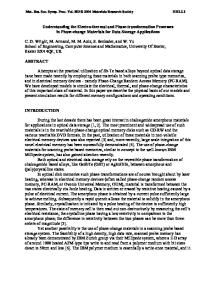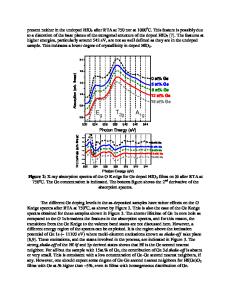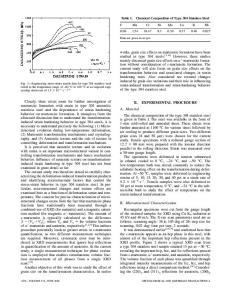Nanoindentation-induced deformation, microfracture, and phase transformation in crystalline materials investigated in si
- PDF / 1,053,653 Bytes
- 11 Pages / 584.957 x 782.986 pts Page_size
- 38 Downloads / 294 Views
Nanoindentation-induced deformation, microfracture, and phase transformation in crystalline materials investigated in situ by acoustic emission Xiao-Guang Ma1,b) Kyriakos Komvopoulos1,a) 1
Department of Mechanical Engineering, University of California, Berkeley, California 94720, USA Address all correspondence to this author. e-mail: [email protected] b) Present address: International Institute for Urban Systems Engineering, Southeast University, Nanjing 210096, China. a)
Received: 4 November 2019; accepted: 30 December 2019
With the ever-increasing importance of nanoscale deformation phenomena in contemporary technologies, basic understanding of material behavior at the nanoscale has become of critical importance. Especially, nanomechanical testing that provides the capability to study fundamental nanoscale deformation and phase change phenomena in real time and under controlled loading conditions is essential for nanomaterial research. In this study, acoustic emission (AE) was used in situ to characterize nanoindentation-induced deformation, microfracture, and phase transformation processes intrinsic of bulk single-crystal MgO and polycrystalline Al, thin films of polycrystalline SiC, and thick films of austenitic TiNi shape-memory alloy. Scale-dependent plastic deformation and microfracture affected by the indenter tip radius and the applied normal load are interpreted in terms of the type and intensity of AE events revealed by abrupt displacement excursions in the loading response of the indented materials. The amplitudes of AE waveforms are used to examine characteristic deformation, microfracture, and phase change mechanisms in the time domain. Fast Fourier transformation and short-time Fourier transformation analyses provide further insight into the material behavior and structural changes due to indentation loading in the frequency and time-frequency domain, respectively. The methodology developed in this study represents an effective approach for nanomechanical testing and in situ characterization of nanoscale deformation, microfracture, and phase transformation phenomena.
Introduction After a few decades of continuous development, the indentation method has become a standard method for characterizing material behavior. In particular, because of its simplicity and effectiveness to probe material behavior at the nanoscale, instrumented nanoindentation has been widely accepted as an effective technique of nanomaterial research in a wide range of science and technology sectors [1]. Because of the high stress and strain gradients arising in the vicinity of a nanoindenter, various localized physical processes may occur during loading and unloading, such as nucleation and movement of dislocations [2, 3, 4, 5], fracture [4, 6, 7, 8, 9], phase transformation [4, 10, 11, 12, 13], amorphization [4, 12, 14], and nanocrystallization [14, 15, 16]. Direct monitoring of such localized processes is cumbersome, requiring the integration of in situ characterization methods with high-sensitivity sensors that can pro
Data Loading...











